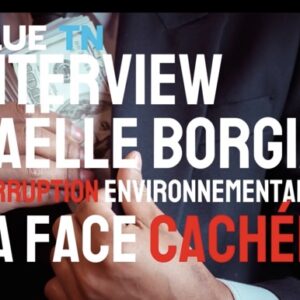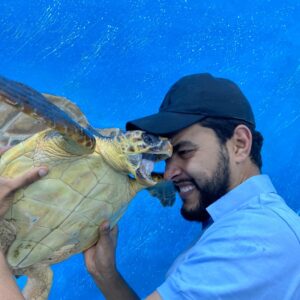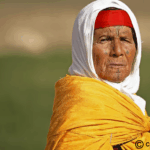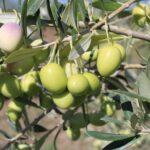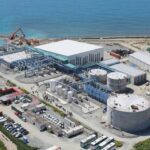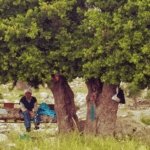When Dean Martin cheerfully sang “Let It Snow!”, he surely couldn’t have imagined a future where humans would actually try to make it snow. Decades later, that playful dream has drifted into research labs and policy circles, where scientists are exploring the possibility of manufacturing weather itself.
Among the most advanced weather modification techniques, cloud seeding has been extensively developed in the United Arab Emirates (UAE). The program, costing approximately AED 29,000 (USD 8,000) per flight hour, generates an estimated 84 to 419 million cubic meters of water annually, contributing significantly to the country’s total rainfall of 6.7 billion cubic meters.
Yet a critical question remains: could weather manipulation become a reliable tool to curb the escalating climate crisis, especially in an era increasingly shaped by artificial intelligence? Or will it introduce new environmental and ethical risks, as public concern over artificial climate intervention continues to grow?
From Dream to Science: How Cloud Seeding Works
For anyone still imagining cloud seeding as “manufacturing clouds” or persuading them to “cuddle until they rain,” spoiler alert: it’s neither. As Ms. Alya Al Mazrouei, Director of the UAE Research Program for Rain Enhancement Science (UAEREP) at the National Center of Meteorology (NCM) , explains to Blue TN, cloud seeding is simply a weather modification method designed to induce additional rainfall from clouds that already exist.
The technique of cloud seeding is to enhance the rainfall amount only. There is no any creation of clouds.
Ms. Alya Al Mazrouei
It comes in two types: hygroscopic seeding, which is popular in the UAE, and glaciogenic seeding, which is common in colder regions. According to the Director of the UAEREP, in her country, aircraft fire flares loaded with natural salts like sodium or potassium chloride into the base of warm convective clouds. These salts act as condensation nuclei, drawing in moisture and helping droplets grow until they’re heavy enough to fall as rain, boosting precipitation by 10 to 25% depending on atmospheric conditions. Applied in the Rocky Mountains, Sierra Nevada, in USA and China’s Tibetan Plateau, glaciogenic seeding uses silver iodide to form ice crystals in supercooled clouds, producing snow or rain.

Early cloud seeding experiments, from the 1950s through the 1980s, often produced inconclusive results, and research in the United States waned by the mid-1980s due to the difficulty of proving measurable impacts on precipitation or snowpack. Today, a new wave of innovation is transforming the field. The rise of digital technologies, from the Internet of Things (IoT) to increasingly precise atmospheric sensors, combined with the power of AI, is opening fresh possibilities.
The integration of AI, along with high-performance computing and nanotechnology, should further improve the operations, accuracy, and scalability of cloud seeding. It enables real-time analysis and targeted interventions. Overall, it takes this field to another level in terms of efficiency.
Ms. Alya Al Mazrouei
AI from Earth to Sky: Can Smart Cloud Seeding Fuel Extreme Effects?
They say truth is stranger than fiction, and few things illustrate that better than humanity’s attempt to control the weather. With AI now entering nearly all areas, a new question looms on the horizon: could it help us control the skies, or trigger uncontrollable consequences?
At first glance, the idea seems simple enough: disperse tiny particles to induce rainfall. In reality, it’s fraught with uncertainty, cost, and unpredictable outcomes. Even with AI and supercomputing, measuring its true impact remains notoriously difficult. Nature, it seems, rarely follows our scripts. Weather phenomena are influenced by countless variables such as temperature, humidity, wind patterns, and cloud microphysics, all interacting in nonlinear ways.
One of the primary challenges lies in the unpredictability and complexity of atmospheric systems. Training AI models to interpret and predict these dynamics requires vast amounts of high-quality data and, of course, sophisticated algorithms.
Ms. Alya Al Mazrouei
Given this immense complexity, it’s natural to wonder whether such a powerful, still-experimental form of “weather modification” could spiral into dangerous territory. However, experts suggest these fears are largely unfounded. The reason lies in scale: classical cloud seeding, by itself, does not create weather events from nothing. Jonathan Jennings, a meteorologist and president of the Weather Modification Association, puts it plainly in Resources Radio, a podcast by Resources for the Future. Winter clouds over mountains, he notes, typically convert only about 1% of their available moisture into snow. A successful seeding operation might raise that efficiency by 10 to 15%, compared to what would happen without it.
We’re not creating rainfall. We’re just tweaking what’s already there to get a little more out of it.
Jonathan Jennings
That “little more,” he emphasizes, is nowhere near enough to trigger extreme weather events.
Beyond the question of weather control, a logical next concern is the environmental impact of the seeding agents themselves, such as silver iodide, which is often considered a toxic agent. This is a priority for operators. As Dr. Al Mazrouei notes, they conduct regular environmental assessments, using modern AI techniques to ensure that no contamination occurs in the soil or water. This monitoring runs continuously alongside their research and operational activities, reflecting a responsible commitment to work with natural systems while safeguarding water security.
Our rain enhancement program tackles challenges from data quality to model bias and environmental impacts, combining AI with scientific validation, environmental safeguards, and international collaboration to
ensure effective deployment.
Ms. Alya Al Mazrouei

Clouds Under Control: Public Trust, Transparency, and the Challenge of Governance
Seventy years on, cloud seeding remains a deeply divisive practice. Some nations champion it as a tool to combat drought and boost agriculture, while others tread carefully, citing ethical, environmental, and geopolitical concerns. Critics warn it could threaten human rights and let polluters evade accountability. Public resistance is growing too, with petitions like “Stop Unapproved Sun Dimming and Cloud Seeding” in the U.S. and a UK petition to ban geoengineering.
Despite ongoing debate, experts largely agree that fears of cloud seeding causing extreme weather are misplaced, even suggesting it as a potential adaptation tool for drier climates, including the Intergovernmental Panel on Climate Change (IPCC). However, its global future hinges on strong international governance, transparency, and cross-border cooperation, as it alters shared skies, a core principle of the UAE’s rain enhancement program.
We always try to collaborate, share updates, and connect with our neighbors, making sure operations are transparent and coordinated on both sides.
Ms. Alya Al Mazrouei
Central to this engagement are initiatives like the International Rain Enhancement Forum (IREF) and the Rain Enhancement Webinar Series. Dr. Al Mazroui highlights that these platforms not only share cutting-edge research but also foster global collaboration to manage international governance: “Peer-reviewed publications, research grant awarding processes… these initiatives helped a lot. They ensure we build a global network to connect everyone, combining innovation with openness and active stakeholder engagement,” emphasizes Ms. Alya Al Mazrouei.
The IREF, held biennially in Abu Dhabi, is a flagship example. Scientists from multiple sectors convene to present the latest advances in rain enhancement technologies and discuss strategies for water security in the world while maintaining geopolitical stability.
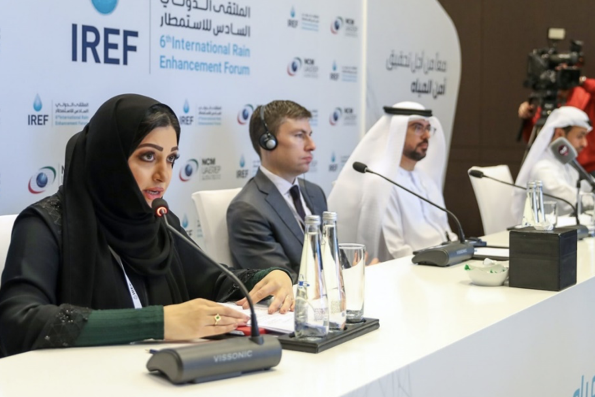
Our strategic aim is to be a global hub, a platform where scientists from all the world work together, and this community is linked with others as well. It helps to present cutting-edge research and engage broader audiences interested in weather modification and water security.
Ms. Alya Al Mazrouei
From the Gulf to North Africa: Shared Skies, Shared Solutions
While modest compared to the large-scale programs of the Gulf, Tunisia’s first cloud seeding experiment, conducted in April 2025 over the Sidi Salem dam basin, reflects a growing regional convergence around water innovation. Though basic, the initiative embodies the same search for technological solutions driving research across other arid and semi-arid countries. As drought cycles intensify and reservoirs dwindle, Tunisia’s cloud seeding experiment is drawing renewed attention from policymakers and researchers eager to benefit from global advances in rain enhancement.
Arid or semi-arid regions need better techniques to support their water security. So one of our main strategic pillars is knowledge and technology transfer. We make sure to share all the research outcomes from our program so they can also benefit other countries in need of such techniques.
Ms. Alya Al Mazrouei
Tunisia, situated at the crossroads of the Mediterranean and the Sahara, could become one of the beneficiaries of this open-science approach. Experts say that integrating AI-assisted rain enhancement techniques, similar to those refined in the UAE, could significantly improve rainfall predictability and optimize water management for agriculture and reservoir replenishment.
The road ahead, however, is not without obstacles. Tunisia still faces limited research infrastructure, scarce atmospheric data, and the need for transparent governance to ensure environmental safety and public trust. Yet the country’s growing scientific and environmental awareness, combined with regional cooperation and technology transfer, may allow it to transform past experiments into a renewed model of climate adaptation, showing that, even in the driest skies, innovation can bring a measure of rain and hope. “These challenges don’t make it impossible, but it needs a lot of further research and further collaboration with scientists and researchers from different sectors.”, concluded Ms. Alya Al Mazrouei.
References
- https://journals.ametsoc.org/view/journals/bams/103/10/BAMS-D-21-0279.1.xml
- https://www.dri.edu/making-it-snow/
- https://gulfnews.com/uae/weather/uae-researchers-harness-ai-to-assess-cloud-seedability-in-real-time-1.500283563
- https://www.scenenow.com/Buzz/AI-Powered-Cloud-Seeding-Efforts-to-Increase-Rainfall-Across-UAE
- https://www.ciel.org/news/growing-momentum-for-solar-geoengineering-non-use/
- https://petition.parliament.uk/petitions/701963?
- https://www.change.org/p/stop-unapproved-sun-dimming-and-cloud-seeding?
💧 FAQ – AI and Cloud Seeding: Can We Control the Rain?
1. What is AI-powered cloud seeding?
AI-powered cloud seeding combines artificial intelligence, data analytics, and atmospheric science to identify the best conditions for inducing rainfall. It helps improve precision, efficiency, and environmental monitoring during weather modification operations.
2. How does cloud seeding work in the UAE?
In the UAE, aircraft release natural salts like sodium chloride into warm clouds. These particles attract moisture, helping droplets grow until they fall as rain. With AI support, seeding missions are now planned and executed based on real-time weather data for higher accuracy.
3. Is cloud seeding safe for the environment?
Yes. According to Dr. Alya Al Mazroui from the UAE Research Program for Rain Enhancement Science, modern operations use minimal, non-toxic agents and advanced AI monitoring to prevent soil or water contamination.
4. Can AI make weather modification more efficient?
Absolutely. AI improves data analysis, cloud selection, and timing of seeding flights. It reduces costs, enhances rainfall prediction, and increases the overall success rate of seeding missions by 10–25% depending on conditions.
5. Does cloud seeding cause extreme weather or pollution?
No. Cloud seeding cannot create storms or extreme weather. It only enhances existing clouds by a small percentage. Environmental assessments and AI-based tracking ensure minimal ecological impact.
6. What are the ethical concerns about weather control?
Critics worry about transparency, cross-border effects, and potential misuse of geoengineering. Experts highlight the need for international governance, public trust, and shared scientific oversight.
7. What is Tunisia’s role in cloud seeding research?
Tunisia launched its first cloud seeding experiment in April 2025 over the Sidi Salem dam basin. The project aims to explore AI-driven rain enhancement techniques to improve water security in North Africa’s arid zones.
8. Can cloud seeding solve drought in MENA countries?
Cloud seeding can help increase rainfall and support agriculture, but it’s not a standalone solution. It must complement sustainable water management, conservation, and climate adaptation strategies.
9. Who are the leading experts in AI and cloud seeding?
Dr. Alya Al Mazroui, Director of the UAE Research Program for Rain Enhancement Science, is a leading expert in this field, alongside international researchers collaborating through the International Rain Enhancement Forum (IREF).
10. What’s next for AI in climate and water innovation?
The future lies in integrating AI with satellite data, nanotechnology, and international cooperation. Countries like the UAE and Tunisia are paving the way for responsible, science-based approaches to weather modification and water security.
Copyright © 2025 Blue Tunisia. All rights reserved

